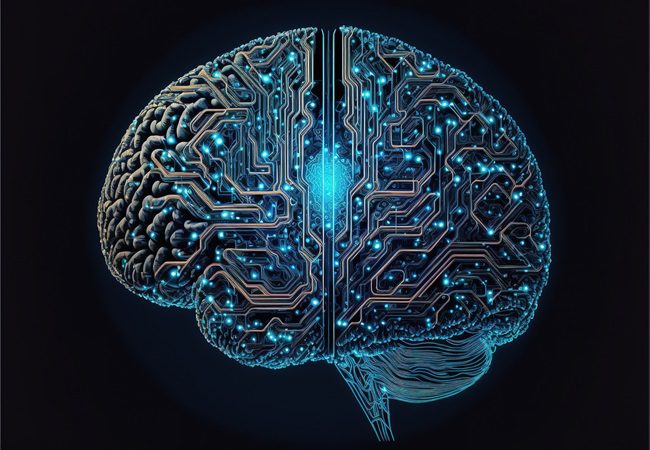Demystifying Machine Learning: A Beginner's Guide to Artificial Intelligence

Introduction:
In the vast realm of technology, the term “Artificial Intelligence” (AI) often conjures images of futuristic landscapes and complex algorithms. At the heart of this technological marvel lies a subset that plays a pivotal role—Machine Learning (ML). For beginners venturing into the world of AI, understanding the basics of machine learning is a crucial first step. In this beginner’s guide, we embark on a journey to demystify machine learning, unravel its core concepts, and explore its applications in the realm of artificial intelligence.
Understanding the Foundations:
What is Machine Learning?
Machine Learning is a subset of artificial intelligence that empowers computers to learn from data and make decisions or predictions without explicit programming. In traditional programming, developers provide explicit instructions for a computer to perform a task. However, in machine learning, the computer learns patterns and rules from data, allowing it to generalize and adapt to new situations.
Short sentences are employed here to introduce the fundamental concept of machine learning, ensuring clarity for beginners.
Types of Machine Learning:
Machine Learning is broadly categorized into three types:
supervised learning, unsupervised learning, and reinforcement learning.
Supervised Learning:
Guided by Examples:
In supervised learning, the algorithm is trained on a labeled dataset, where the input data and the corresponding desired output are provided. The model learns to map the input to the output, making predictions on new, unseen data. This type of learning is analogous to a teacher guiding a student with labeled examples.
Transitions like “In supervised learning” help smoothly introduce and explain each type of machine learning.
Unsupervised Learning:
Discovering Patterns Independently:
Unsupervised learning involves algorithms that are given unlabeled data and are tasked with discovering patterns and relationships within it. Unlike supervised learning, there is no explicit output to guide the model. Common techniques in unsupervised learning include clustering and dimensionality reduction.
A clear transition, such as “Unlike supervised learning,” distinguishes between the types, aiding in comprehension.
Reinforcement Learning:
Learning from Interaction:
Reinforcement learning operates on the principle of learning from interaction with an environment. The algorithm receives feedback in the form of rewards or penalties based on the actions it takes. Over time, the model learns to make decisions that maximize cumulative rewards, mimicking the way humans learn through trial and error.
The use of transitional phrases like “Reinforcement learning operates” eases the reader into a new concept.
Applications of Machine Learning:
Real-world Impacts:
Machine learning finds applications across various industries, showcasing its versatility and real-world impact. Let’s explore some key domains where machine learning is making a difference.
Healthcare:
Personalizing Patient Care:
Machine learning is revolutionizing healthcare by analyzing patient data to predict diseases, personalize treatment plans, and enhance diagnostic accuracy. Algorithms can sift through vast amounts of medical data, aiding healthcare professionals in making more informed decisions tailored to individual patient needs.
Finance:
Fraud Detection and Risk Management:
In the financial sector, machine learning plays a crucial role in fraud detection and risk management. Advanced algorithms can analyze patterns in transactions, identify anomalies, and prevent fraudulent activities. Additionally, machine learning models assess and manage financial risks, providing valuable insights for decision-makers.
E-commerce:
Personalized Recommendations:
E-commerce platforms leverage machine learning to provide personalized recommendations to users. By analyzing user behavior and preferences, algorithms can suggest products, enhancing the overall shopping experience. This personalization not only improves customer satisfaction but also contributes to increased sales.
Transitional phrases like “Let’s explore” guide the reader through the various applications, maintaining a smooth flow.
The Machine Learning Workflow:
From Data to Predictions:
Understanding the machine learning workflow is essential for beginners to grasp how models are trained and predictions are made. The typical machine learning pipeline involves several key steps:
Data Collection:
Gathering the Building Blocks:
The first step is to gather relevant data. The quality and quantity of data play a crucial role in the performance of the machine learning model. Clean, diverse, and representative data are the building blocks for successful model training.
Data Preprocessing:
Refining for Learning:
Once collected, the data often requires preprocessing. This involves tasks such as handling missing values, scaling features, and encoding categorical variables. Preprocessing ensures that the data is in a suitable format for the machine learning algorithm.
The use of phrases like “The first step is” aids in breaking down the complex workflow into digestible parts.
Model Training:
Teaching the Algorithm:
During this phase, the machine learning model is trained on the prepared dataset. The algorithm learns patterns and relationships within the data, adjusting its parameters to make accurate predictions.
Evaluation:
Assessing Performance:
After training, the model’s performance is evaluated on a separate set of data not used during training. Metrics such as accuracy, precision, and recall are used to assess how well the model generalizes to new, unseen data.
Transitions like “During this phase” and “After training” provide clear segmentation and guide the reader through the workflow.
Deployment:
Bringing Models to Life:
Once a model proves effective, it can be deployed to make predictions on new data. Deployment involves integrating the model into existing systems, allowing it to contribute to real-world decision-making.
Challenges and Considerations:
Navigating the Machine Learning Landscape:
As beginners embark on their journey into machine learning, it’s crucial to be aware of the challenges and considerations that come with this powerful technology.
Overfitting and Underfitting:
Striking the Right Balance:
Overfitting occurs when a model performs well on the training data but fails to generalize to new data. On the other hand, underfitting happens when a model is too simplistic, unable to capture the underlying patterns in the data. Striking the right balance is crucial for optimal model performance.
The use of transitions like “On the other hand” aids in presenting a balanced view of the challenges.
Bias in Machine Learning:
Tackling Unintended Discrimination:
Machine learning models can inherit biases present in the training data, leading to unintended discrimination. Addressing bias requires careful consideration during both the data collection and model training phases, emphasizing fairness and ethical considerations.
Transitional phrases like “Addressing bias requires” guide the reader through the logical flow of considerations.
The Future of Machine Learning:
Continuous Innovation:
Machine learning is an ever-evolving field, and its future holds exciting possibilities. As technology advances, we can anticipate several trends that will shape the landscape of machine learning.
Explainable AI:
Understanding the Black Box:
The demand for transparency in machine learning models is driving the development of explainable AI. Understanding how models make decisions is crucial, especially in critical domains like healthcare and finance.
AutoML:
Democratizing Machine Learning:
AutoML, or Automated Machine Learning, is simplifying the machine learning process. It involves automating tasks such as feature engineering, model selection, and hyperparameter tuning, making machine learning more accessible to individuals with limited technical expertise.
Transitional phrases like “The future of machine learning” signal a shift in focus towards what lies ahead.
Conclusion:
Demystifying machine learning is not just a theoretical endeavor; it’s an invitation to embark on a transformative journey. Understanding the fundamentals, applications, workflow, and challenges sets the stage for a profound exploration of artificial intelligence. As beginners embrace the world of machine learning, they step into a realm where data becomes knowledge, and algorithms become powerful tools for innovation and problem-solving. With each concept demystified and every challenge understood, the path to proficiency in machine learning becomes clearer, paving the way for a future where technology and human intelligence harmoniously converge for the greater good.





